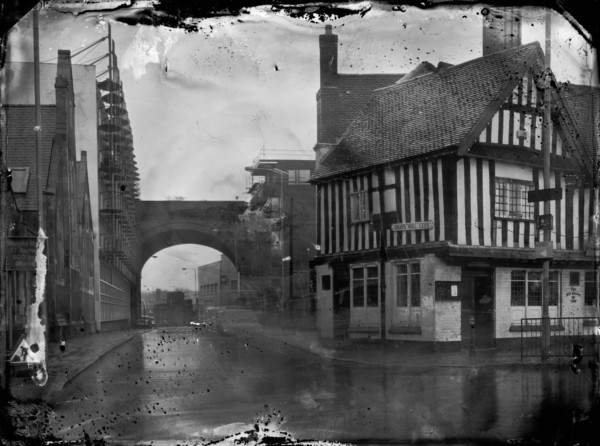
Birmingham
This series of wet plate collodion photographs were made in response to the historic survey photographs by Harold Baker held in the archive of Birmingham Library.
The body of work set out to be a straight forward survey, adopting the methodologies of the Victorian survey photographers, who aspired to photograph in an objective, scientific way to gather factual, historical information. Initially, my plan was to photograph areas which Baker had previously recorded, in order to observe how the city has changed. However, this shifted during the course of the project as it would also have inevitably done with the survey photographers who became seduced by the picturesque and the specific qualities of the medium.
Working with wet plate collodion sets up an interesting tension between Baker’s Birmingham of 1890 and the city in 2009. Once colour is reduced to black and white and people along with fashionable clothes are removed by the use of slow exposures, the similarities between the two eras become striking as a portrait emerges of a city which has always been in a transitional state, striving for improvement and redevelopment.
The use of historic techniques force these photographs to be considered in terms of the past, whilst the changes documented are still happening. The result is a historic portrait of a contemporary city with all the contradictions both architecturally and metaphorically held within this. This inherent contradiction within the images is perhaps best summerised in Robert Smithson's description of building works as 'Ruins in Reverse',1 which rather than falling, rise into ruin, as can be seen in the images of construction work on The Cube from Gas Street Basin.
Six prints from this series are in the permanent collection of the Birmingham photographic archive, Accession Number 2009 / 222 Collection Reference MS 2771
1)Smithson, R: 'Monuments of Passaic, NJ' in 'The Collected Writings' University of California Press, ed Flam, J